 |
 |
 |
 |
 |
 |
 |
 |
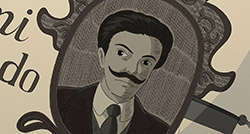 |
 |
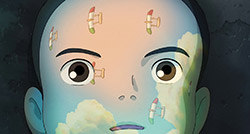 |
 |
 |
 |
 |
 |
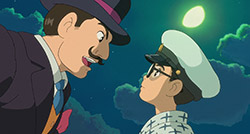 |
 |
 |
 |
 |
 |
 |
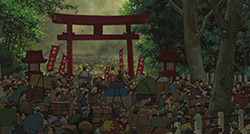 |
 |
 |
 |
 |
 |
 |
 |
 |
 |
 |
 |
 |
 |
 |
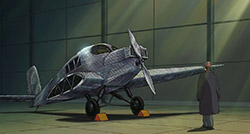 |
 |
 |
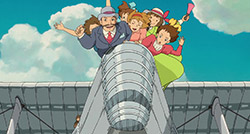 |
 |
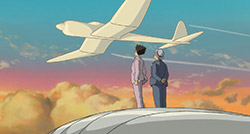 |
 |
 |
 |
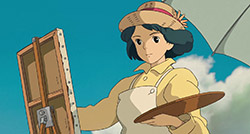 |
 |
 |
 |
 |
 |
 |
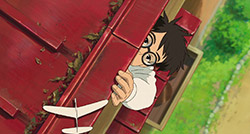 |
 |
 |
 |
 |
 |
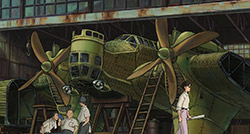 |
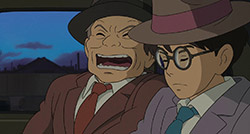 |
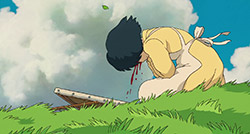 |
 |
 |
 |
 |
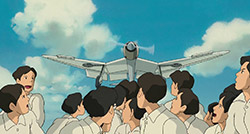 |
 |
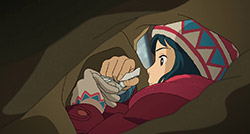 |
 |
 |
 |
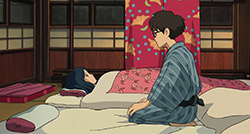 |
 |
 |
 |
 |
 |
 |
 |
 |
 |
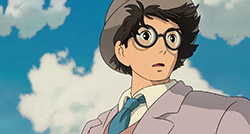 |
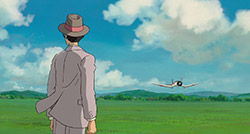 |
 |
 |
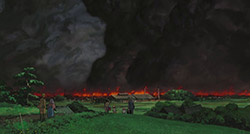 |
 |
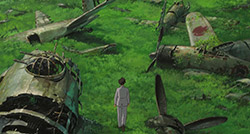 |
 |
 |
「風立ちぬ」 (Kaze Tachinu)
“The Wind Rises”
Jirou dreams of airplanes…
If there’s one word that springs to mind when contemplating Miyazaki Hayao’s final film, it would be “difficult”. And I’ve contemplated it a lot. I saw it in Japanese soon after its theatrical premiere, and seeing it a second time with subtitles has done nothing to help me clarify my feelings about it – if anything, I’m more puzzled than ever. Both as a capstone to the most artistically ambitious and successful career in animation history and as a standalone statement, Kaze Tachinu is an enigma.
Certain things can be stipulated to, I think. The Wind Rises is a staggeringly beautiful work, both in sound and vision. Miyazaki works with his usual musical partner here, the peerless Joe Hisaishi, and the first frames are the film are accompanied by the composition “Journey (Dream of Flight)” from Hisaishi-san, a gorgeous Italianesque piece that’s interwoven throughout the entire film. Rarely have I encountered a piece of music that so suits the mood of a movie – it speaks eloquently of flight. Flights of imagination, of fancy, of euphoria and sadness. Hisaishi’s score – and especially this piece – are like the wind that Miyazaki’s vision soars upon for two hours.
And what a vision it is. As anyone who loves Miyazaki-sensei’s work could tell you, the master has a lifelong obsession with flight and airplanes. We’ve seen it expressed in some form in almost all of his movies, most specifically Laputa: Castle in the Sky and Porco Rosso. While Kaze Tachinu is less overtly fantastical than those films, it still takes the form of a dream. Sometimes quite literally, as the movie’s protagonist shares his dreams with the likes of boyhood heroes and the love of his life – but the entire story has the air of a dream to it, a musing on the way dreams allow us to soar above our limitations and experience true beauty.
If there’s one sequence in the film that’s most striking, however, it’s more of a nightmare – Miyazaki’s depiction of the Great Kanto Earthquake of 1923. The immediacy of feeling he’s able to communicate with this slightly surrealistic set piece is remarkable, a testament to his genius. Even in this horror, though, there is beauty – for it’s in the aftermath of this disaster that Miyazaki’s hero forms the connection with the woman he’ll come to love. This, too is a theme we see repeated over and over in The Wind Rises – the inseparability of light and darkness, of beauty and horror. And it’s here in which the difficult questions that make the film so difficult reside.
Nominally this is the life story of Horikoshi Jirou (Anno Hideaki, Kaburagi Kaichi as a child), the man who designed the legendary A6M “Zero” fighter plane for Mitsubishi. But the personal side of the story is almost completely fictionalized – loosely based on a pre-WW II novel by Hori Tatsuo (also titled Kaze Tachinu) which has no connection to Horikoshi. This part of the film delivers some of its most effecting moments, mostly centered on Horikoshi’s love for a young woman named Satomi Naoko (Takimoto Miori, Iino Mayu as a child). Horikoshi and Naoko are on a train from Fujioka to Tokyo when the earthquake hits, and his bravery saves the life of her servant. Once she’s safe he leaves without any request for reward, but we know this is a connection that will be renewed in the future.
Without a doubt, the love story between Jirou and Naoko is the most conventional part of the film – yet it’s very engaging (Miyazaki’s decision to cast his friend Anno – the legendary Evangelion director whose previous seiyuu experience consists of playing a cat in FLCL – as Jirou is an interesting one. Anno-san is naturalistic and unmannered to the point of being somewhat flat – like so much in Kaze Tachinu, I have a hard time deciding how I feel about it). Naoko suffers from tuberculosis (as many did in those days) and to call this a bittersweet romance would be an understatement. But ultimately the part of the story that springs from Hori’s novel is pretty straightforward, essential to the movie’s existence but not at the heart of it. And it’s the other side of Kaze Tachinu, that which dances more closely with history and Horikoshi’s true life story, that’s both controversial (especially in Japan) and challenging.
It’s fairly well-known that Miyazaki Hayao is a pacifist. So why, then, choose to make his last film about the man whose planes destroyed Pearl Harbor, and were essential to the Japanese war effort? Horikoshi too hated war, and thought the Japanese government foolish to pursue war with America – his journals from the time bear this out. Yet design the planes he did, knowing full well what they would be used for. Miyazaki said the idea for Kaze Tachinu was inspired by a single quote from Horikoshi – “I just wanted to make something beautiful.” And while I’ve no reason to doubt Horikoshi-san at this word, for me at least the answer isn’t that simple.
Fundamentally, the entire raison d’etre of The Wind Rises boils down to a simple question – is it possible to separate the man from the way in which that which he created was used? It’s very possible that Miyazaki saw this film as an opportunity to spur debate over Japan’s plans to re-militarize (which has been a simmering issue here for decades and is now coming to a head under nationalist premier Abe Shinzou). But he also opened himself up to charges that he was romanticizing Horikoshi’s role – sugarcoating the truth to cast him in a better light. Miyazaki uses the aforementioned dream sequences – mostly in the company of Jirou’s boyhood hero, Italian aircraft design pioneer Giovanni Caproni (Nomura Mansai) – to give form to Jirou’s imagination and communicate the nature of this desire to create beauty. Caproni’s involvement hits very close to home – it was his plane that Miyazaki named Studio Ghibli after.
The movie is full of this sort of equivocation. We have a trip to Germany to visit Mitsubishi’s licensed partner Junkers, a decade ahead of Japan in aircraft design. The Germans are condescending towards their Japanese “guests”, but founder Hugo Junkers allows Jirou and his best friend Honjou (Nishijima Hidetoshi) to see inside the legendary G.38 “Flying Wing” and even take a test flight. Junkers was another pacifist – a genuine anti-war internationalist who had his company stolen from him by the Nazis and died penniless in 1935. We also meet a sympathetic German named Castorp (Stephen Alpert – another non-actor, this time the head of Ghibli’s overseas division) at the rural hotel where Jirou and Naoko reconnect years later. Castorp (the name is taken from the protagonist of Thomas Mann’s The Magic Mountain) warns of impending disaster for Germany and Japan, and sings charming German ballads at the hotel piano while smiling beatifically (if a little impishly). It’s later implied that he fled Japan with the country’s thought police hot on his tail.
That sequence at the hotel – full of innocent romance and beautiful scenery, of soaring paper airplanes and Castorp’s charm – is one of the best in the movie. But it also contributes to the feeling that Miyazaki is trying very hard to convince us that there’s no blame to be assigned to his hero – that he was truly a victim at a time when victims were being made all over the world. Miyazaki makes it very clear that Japan was behind the times, in over its head, being dragged along by fools and scoundrels on a path of destruction. But what he never truly does is cast any independent judgment himself on Jirou’s role – and, more crucially, he never takes us inside Jirou’s process of judging himself.
Given the context of the film, that seems a surprising omission for Miyazaki. Perhaps it really is as simple in Miyazaki’s eyes as can be – Jirou is blameless. But that seems unlikely to me, as thoughtful a man as Miyazaki is. Perhaps he feels it’s not his place to judge Jirou, never having walked in his shoes. Perhaps he feels it would be disrespectful to show us what Jirou believes in this respect, when Jirou chose in real life to share little of that himself. Those are valid considerations, but for me it leaves Kaze Tachinu feeling like an incomplete portrait of its hero, fictionalized or otherwise. The film effectively stops at the beginning of the war, and the introspection for Horikoshi stops when the military takes delivery of the planes. The film is about the process and the dream, I get that – but it’s a conceit to pay so little consideration to what comes after.
“Airplanes are dreams.” Caproni tells Jirou in the movie’s final scene – fittingly, a dream. “Cursed dreams. Waiting for the sky to swallow them up.” This is as close as Miyazaki comes to framing Jirou’s life in moral terms, but it also strikes me that there may be a note of autobiography to it. This is Miyazaki-sensei’s final film, and he too is undeniably a dreamer above all else. He gives shape to the airplanes of his dreams, and to the castles and witches and forest Kami and boys and girls and conflicted men. Perhaps as much as it is about Horikoshi Jirou, Kaze Tachinu is a reflection by Miyazaki on his own dreams and visions – he releases them into the world, and once that happens he has no control over them. People will say of them what they will, and they exist independently of the man who created them.
That’s among many reasons why, despite whatever issues I may have with The Wind Rises, it strikes me as a very fitting way for Miyazaki to say goodbye. A fusion of a fictional novel and a biography, it may in the end be the most self-referential film Miyazaki has created. It’s the most “realistic” of his films in many ways, yet oddly the most fanciful as well – a work by an old man who’s always been very connected to the child that resides in himself and in all of us. Kaze Tachinu seems very much to be an impassioned tribute to the power of dreams, tinged with the frustration of knowing that reality will always place its own stamp on them. Even as we celebrate the man’s indispensable and glorious career, surely knowing that it’s coming to a close is cause for sadness as well. This film is a reminder that Miyazaki Hayao is a unique and irreplaceable artist, and we won’t see his like again.
ED Sequence
 |
 |
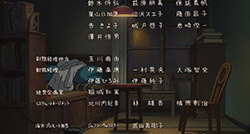 |
 |
ED: 「ひこうき雲」 (Hikouki Gumo) by (Yumi Matsutoya)

Probably the most beautiful wedding sequence in the history of cinema.
Fuck Frozen. This is the movie that truly deserved that Oscar. Frozen and Disney may have money and popularity, but there’s one thing that they’ll never have that Miyazaki and Ghibli always will have: a legacy.
In truth, I think Kaguyahime should have gotten the Oscar – it was the best Ghibli film of 2013. But I certainly think Kaze Tachinu was the best nominated film (and Frozen was very good for what it was). I think the Oscars figure they’ve honored Miyazaki, so they never have to give anime another award.
Oh, and Disney – no legacy? Really? Fantasia, Sleeping Beauty, The Little Mermaid?
Well, Kaguyahime wasn’t released in America around Oscar season so unfortunately it wasn’t eligible. As for the movie itself, I haven’t seen it yet so I’ll hold you to that one.
Also as for the legacy comment, maybe I should’ve put that more into context. When I said Disney, I meant to say TODAY’s Disney rather than Disney ever since it began. Admittedly I should’ve been more specific, sorry.
But yeah, I really think that not just Disney, but the majority of Western animated films that come out these days care more about profit than actual creativity (I’m looking at you Dreamworks). At least Pixar has still got it.
Do you happen to know the release date of Kaguyahime Blu-ray?
Kaguyahime actually did win the Mainichi (Japan’s Academy Award) over Kaze Tachinu, as it happens.
As for a BD release, GKids has the rights in the US but I’ve no idea of a date. I would expect a Japanese BD release somewhere around October.
Actually, Kaguyahime won the Mainichi Film Award and Kaze Tachinu won the Japan Academy Prize.
http://en.wikipedia.org/wiki/Mainichi_Film_Award_for_Best_Animation_Film
http://en.wikipedia.org/wiki/Japan_Academy_Prize_for_Animation_of_the_Year
Well, in truth I should have said “Japanese equivalent“. The Mainichi have been around 30 years longer and are more prestigious in many eyes.
I found the movie’s story itself to be pretty mediocre and yet I still loved it thanks to the visuals. It’s something rare as I’m not an animation person, I’m the type to like shows more based on their story. The sequences of Jirou (day)dreaming about planes are all superb. And the earthquake scene alone makes the movie worthwhile.
I’m not gonna bring up stuff like Jirou’s best friend attitude of “we make planes then we don’t care what they do with them” since you did a good job and I don’t have anything to add.
Oh yeah and I like how grownup Naoko kinda look like Princess Sarah, couldn’t stop laughing for a while when watching it.
Frozen? A terrible movie with terrible values.
I’d be ashamed to have a child of mine watch it.
Seriously.
Word. That movie was hands down one of the most overrated pieces of shit I’ve ever seen.
Anyone who is a fan of the German director, Werner Herzog (Ebert ranked his ‘Aguirre, the Wrath of God’ as one of the greatest films of all time), should check out his brilliantly bizarre English dub of Castorp.
I came in looking to see what this was, saw the pics, was like “this looks like Ghibli”, looks down
The Wind Rises
Exits stage left, because I don’t want to be spoiled lol
I’ve noticed that all Ghibli films has a deep and meaningful moral. In fact so buried it takes several times of re-watching and catching every detail to just notice it. But once found, the message is clear and obvious. “The Wind Rises” is be the last Ghibli film Miyazaki will ever direct. His message brought to us through this work of masterpiece has honestly edified me.
It seems that quite a lot of people I’ve met believe the moral of the story is to prevent wars from happening or else this would happen etc. But I’m sure it has a lot more meaning to it, it’s directed by Miyazaki overall.
The message I believe is: to not fully devote and depend your whole life on pursuing your dreams IF you are not completely sure of the consequences and the reason of your strong motivation. And plus, the fact that we all die one day, we must learn to give up and pass-away packed with invigorating happiness.
The prove is there if you think in my direction of thought, there are several other great morals in “The Wind Rises”, I wont be mentioning them here but you can watch it again and I will assure you you will understand what I meant.
The same applies for all films by Ghibli. I wont be mentioning all of them here but it is definitely worth spending your time re-watching the other films and try to understand.
I am currently working on Totoro, it feels like a film for young children but I am almost 100% sure there is an enlightening moral hidden behind it’s children themes.
https://randomc.net/image/Kaze%20Tachinu/Kaze%20Tachinu%20-%2001%20-%20Large%2053.jpg
https://randomc.net/image/Kaze%20Tachinu/Kaze%20Tachinu%20-%2001%20-%20Large%2060.jpg
That is a huge nose.
well, in Nippon. western guys are “longnose” guys.. they even make jokes today with this 🙂
Indeed. JAL had a huge PR nightmare earlier this year when they did a commercial which had Western actors with long prosthetic noses. Honestly, I love this country but their level of cluelessness about the rest of the world sometimes really astonishes me.
Yeah, i had this in my mind. But 1 time and in rare occasions it is a joke, but if you go there an use this joke again and again, then the joke become a insult and racist
You mean ANA, not JAL, right? I was curious so I searched and found this:
http://www.usatoday.com/story/money/business/2014/01/23/nippon-airways-commercial/4791711/
Sorry, misremembered.
The wiki article for the Magic Mountain says that Caproni was the born into a family of ‘merchants’. Just let that sink in for a second.
Notice how when they went to germany many of the westerners (germans) portrayed in the film didn’t have noses that large.
If your still not getting these subtle hints im dropping out here in other words he’s a jew.
I just seeing the first 15 Minutes, and the pacing is a pit puzzling for me. As if they dont care to build up a background, like they done it in their past. They start right in the middle of it, and fast forward it a bit to much. And right now the “voices” lake some of Emotions. As if they are just read from the script. the voice dont live, dont give the figures on the screen soul. They are no making a connection, voice and actor are two worlds, forces to life together
short:
right now, the pacing is not really good, for my taste
more to come, when i watch the rest
So, after watched to the end. i must say, this Film is special
It is like a Book of Memories and Dream. Some scenes is like a Chapter of his Life. The Sun was the Love he felled for his wife, that gave the film the heart and warmth of Life.
For the pacing like i wrote, it felt like a Book of his Diary of this Men, bring alive in Animation.
Even the most Sound SFX was made with Human mouth 🙂 Mostly in the Dream World,and the Earthquake. As if a Monster is burping the Earth in Waves.
“We are just Planes Engineers, that want to build Planes!”. Even if they know, they where used fo tool of destruction. Well, i can not blame them. Even the Manhattan Project Engineers was not different. The Atomic bomb was build that way. When the War was over they try to used it for Peace.
Like a Gun. The producer just created the Gun. It is the Owner that use it for Protect what are dear to him, or he use it for Killing other for greed and other dark matters
Otto Hahn, is he a Monster? or is it Oppenheimer? or perhaps is Teller the bigger one? How are we know, to blame over them. It was the choice of others that used it for War or Peace
Like a Car can be useful or used to kill a person
uff. i hope you get my gist of this
To the Sound. Yeah, it was unfamiliar of Studio Ghibli. But i think, he wanted to give this Film a Diary touch, in Pictures and Sound
But seriously. The Main Actor could put more Soul in his Emotions.. Only at the last Seconds i feel a little spark of Hope.
Gome-ne, Mr. Miyazaki-san. I grown up with your Dreams. It started with “Future Boy Conan” (未来少年コナン) i was around 8 Years old. I began to understand your messages in your Films. and now i am 41 Years old. Let me say it that way. I am very touched, that i found your Films and Stuido Ghibli. I hope your Son will make a good Successor, and walk his Way. I am wish him Luck. because コクリコ坂から have touched my Heart, too. The Flame Mr. Miyazaki-san lite in my heart, is still burning today.
*snief* Enough of open my Anime and Young Heart to the Community here. I hope some feel the same way like me. If you do, Nakame let us enjoy being Child’s in Heart when watching Animes. Let it be a TV Broadcast, OVA or Films. This feelings of my youth, is still burning inside of me. It gives me Energy to charge my Batteries for Life
Uff…
Germanguy, out
*bow in deep respect of Stuido Ghibli Works*
oh, and a little bit of the meaning of this Old Music video, is my engine, too
http://www.youtube.com/watch?v=1pkVLqSaahk
I honestly believe that we as people in our pursuit of our dreams we are still under the mercy of life. Like it or not Where And When we are definitely leaves a Huge impact on our lives. if you love what you do for a living but your country and the world decided your work should be directed towards another direction then you really have no other choice but to follow your dreams to the end. That or just shoot yourself in the head wishing the world would solve its conflicts by any other mean than using you as a pawn for their means.
Beautiful movie, very fitting to be a last Hayao Miyazaki. If his message is to let us know the world will do people wrong, he did quit a good job showing that.
I remember going to the cinema for this last month. Seeing it on big screen is really worth it and those who can I encourage to go. (Plus contributing to the movie’s revenue is a good thing). With Miyazaki’s final film I feel like I’m witnessing the end of an era. It’s a bittersweet thing.
Yes…rather difficult but still enjoyed it <3
And as always, beautiful artwork!
It is appaling that things so beatiful as airplanes have to become deadly weapons…
Makes me remember Simoun, of all things, and priestesses horror at turning their sleek craft drawing symbols in the sky for religious reasons into tools of death and destruction.
I believe that Miyazaki Hayao chose this as his last film to pass down the message that we should not blame mainly on the people who are just following their dreams that results in something ugly because of circumstances.
This is a story of someone pursuing his dream, but the circumstances caused what he created to become a scorn in history. (Mainly because of them losing the war)The bigger blame is on the Japanese government at that time, not him.
There are many others who pursuit their dreams resulting in what they achieved to become scorned in history. (For example in a lesser extent, Einstein’s theory of E=mc2 wasn’t intended for a bomb, yet it result into the nuclear bomb. I believe if cold war really turn hot he would be the scorn of all surviving humanity for causing the world to become a nuclear wasteland)
The sole problem with the film is that Miyazaki clearly try very, very hard, portray Jiro as “pure” since the first scene. “Fighting is never justified”, his mother says.
That apart, the film is not about Jiro, is about Japan himself, is about Achilles and the Tortoise. In an analogy, Jiro is Japan while Nahoko is the starving childs. Jiro is almost autist running behind his dream. He cares for nothing, he left his family behind alongwith the three important womans of his life. His mother, his sister and after his wife. And none of them blames Jiro for this, because them accept that he is making a sacrifice. But then, when Jiro finally makes a good aeroplane (it’s A5M, not “the” Zero), what he does during field test? He avert his eyes to look in the direction of Nahoko, because she is important! If not wouldn’t be a sacrifice! It’s as if Miyazaki was saying, “Yes, we know we did wrong and some controversial things, that many were killed by the dreams of others, but we made a choice! We had to go till the end, we had to make it worth!” In the end, as Jiro asks Honjo, Japan become the Tortoise.
Viewed this way, the movie seems to make more sense, imo.
By the way, know about Santos Dumont? The pioneer that had dreamed with aeroplanes as something beautiful that every person could have, that would make wonders for humanity… guess what, he became so much depressed seeing aeroplanes used as weapons (in his own city!) that he killed himself!
After that you could say that everyone knew for what it would be used, but then, if some bad government wanted aircrafts someone would produce it, there will always be someone willing to do it.
He took his Eyes away in this moment, because Nahoko died in this seconds, and he feels it. So even the Plane was not important right now
“because Nahoko died in this seconds”
Dude… no.
Jiro sacrificed his Life, to bring Japan forward. So he put his own happiness and life for the sake to give Japan a modern oder advanced Air Plane in his time. To bring Japan forward. And how Japan thank him? The Police wanted to arrest him, and he must going underground
“And how Japan thank him? The Police wanted to arrest him”
He was seen talking and laughing with a S-P-Y.
“and he must going underground”
What’s your problem? Srly…
When I watched the Wind Rises (in the cinema–oh no, dubs!) it seemed to me that the Wind Rises is ultimately autobiographical. Yes, Miyazaki is a pacifist. But Miyazaki, like Jinro, also loved planes. In films like Laputa, Porco Rosso and Kiko’s Delivery Service we can see clearly the man’s love of the wonder of flight and the machines that let us do it. I can personally emphasise. The Mitsubishi Zero really was a beautiful design, but it was also one of the most feared killers of the WWII skies. To admire it is like admiring a shark.
The Wind Rises definitely captures the Japanese work ethos : even when your finance is coughing blood and on the verge of dying, you should be working!!
On a more serious note, once a country have embarked on a path to war, its citizen is locked into supporting it. In a war, people dies. Building a brilliant planes prevents the death of your fellow countrymen, at the cost of the enemy. The Great Kanto Earthquake was a very important factor in the militarization of Japan, and you can really understand why Japan went into WW2 without it.
Amazing. 10/10.
How a story should be told, no, how a beautiful story should be told.